How to Boil an Egg to Get Your Ideal Texture
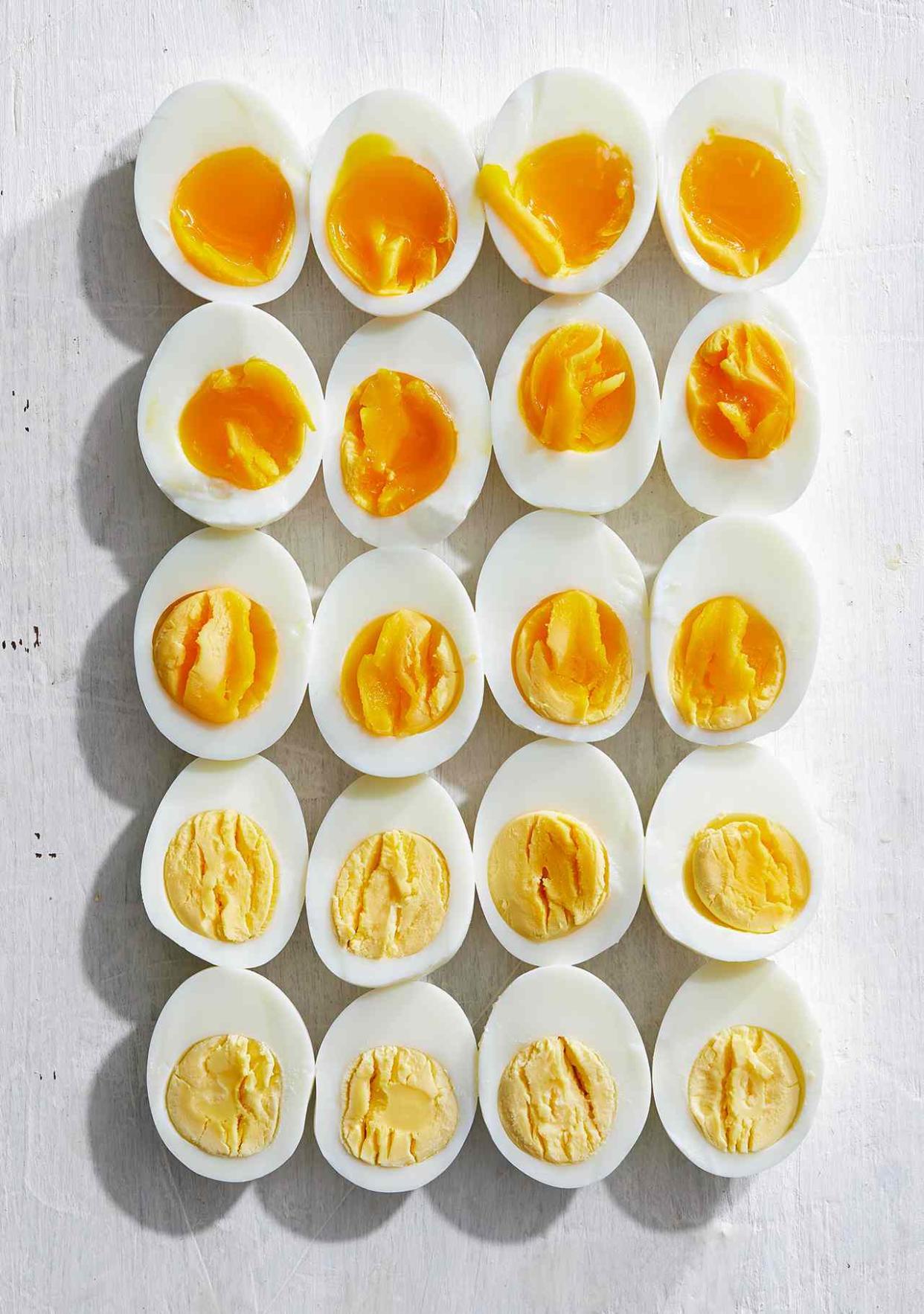
Get ready to take notes, because we're sharing all our Test Kitchen tips on the best ways to boil eggs—whether you like them soft, jammy, or hard-boiled.

The method for how to boil an egg is highly debated. Some swear by steaming (which happens to be our favorite way), while others use the classic technique of making hard-boiled eggs by bringing water on the stove to a boil. As Instant Pots and other pressure cookers have grown more popular, people are using them to make hard-boiled eggs.
If you're craving egg salad or making deviled eggs, this is the place to find out how to boil an egg with appliances in your home. We'll teach you how to hard-boil eggs on the stove, via steam, and in your trusty pressure cooker. Making noodle bowls? We'll also show you how to soft-boil an egg to achieve the perfect runny yolk for your bowl of goodness.
Related: The 6 Best Instant Pots of 2023, According to Lab Testing
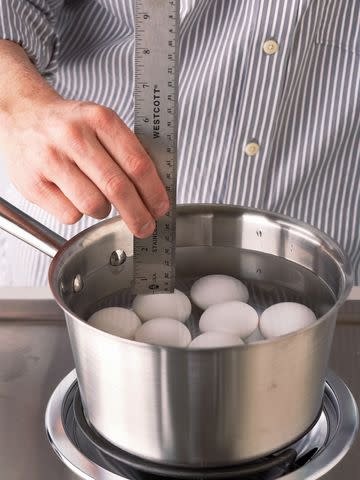
How to Make Hard-Boiled Eggs (or Hard-Cooked) on the Stove
You're not technically boiling the eggs, so hard-cooked eggs is the more accurate term, but you are bringing water to a boil. Whatever you call it, here's how to do it:
Place eggs and water in a saucepan: Arrange the eggs in a single layer in a 3-quart saucepan ($17, Target) so they cook evenly. Add enough cold water to cover the eggs by 1 inch.
Bring water to a boil: Heat saucepan over medium-high heat until the water comes to a rapid boil (water will have large, rapidly breaking bubbles). Immediately remove pan from heat.
Cover and let stand: After removing from heat, cover the saucepan and allow it to stand for 15 minutes. (Scroll down to learn how long to cook soft-boiled eggs using this technique.) Drain the eggs, place them in ice water until cool enough to handle; drain again.
Test Kitchen Tip
Do not stack eggs; this will alter the cooking time and could result in eggs being cooked to different levels of doneness.
How to Make Steamed Hard-Boiled Eggs
This is the technique getting all the praise. Steaming seems to result in easier-to-peel eggs after cooking, which is why this is now our Test Kitchen's preferred way of how to boil an egg to perfection. It's similar to the classic method of cooking in boiled water, just with the addition of a steamer basket so the eggs never actually touch the water.
Get Our Full Directions on Steaming Hard-Boiled Eggs
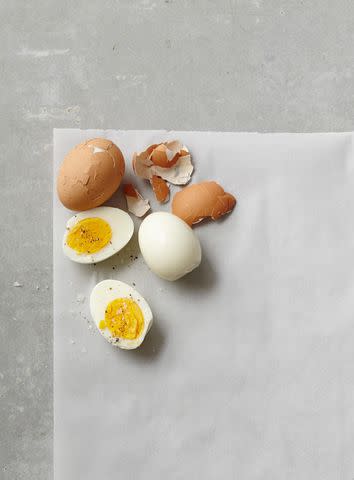
How to Make Hard-Boiled Eggs in Your Pressure Cooker
Yes, you can make hard-boiled eggs in your pressure cooker. This method for making hard-boiled eggs is similar to steaming in that it uses a steamer basket in your Instant Pot with the water underneath the eggs. Follow our guide for pressure cooker eggs that includes times so you can achieve your desired doneness. We all like our eggs cooked a little bit differently.
Learn How to Boil Eggs in a Pressure Cooker
How to Make Hard-Boiled Eggs in the Oven
Need to prep a bunch of hard-boiled eggs for egg salad or maybe egg dyeing for Easter? Make them in your oven! Our Test Kitchen found a mostly hands-off way to make a dozen hard-cooked eggs at once. There's no water involved here, either. Follow these steps to make hard-boiled eggs in the oven:
Preheat oven to 325°F. Tear off a sheet of aluminum foil that is slightly larger than the top of a 12-cup muffin pan ($8, Bed Bath & Beyond). Lay foil over pan. Press foil down into cups of the muffin pan. Place an egg in each cup.
Bake for 30 minutes. Immediately place eggs in a large bowl of ice water. Let stand 10 minutes.
Peel and enjoy or store keep in the fridge in an airtight container up to four days.
Test Kitchen Tip
The foil is used here to help the eggs from touching the pan, which can cause red spots on the cooked eggs.
Related: How to Use a Toaster Oven to Roast, Toast, Bake, and More
How to Peel Hard-Boiled Eggs
It's a sad day when you spend the time making hard-boiled eggs only to have the shells stick and make a mess. (Others feel our pain, too. Just watch this viral egg-peeling hack we had to try.) To easily peel a hard-boiled egg, gently tap it on the counter to crack the shell. Roll the egg on the countertop under the palm of your hand. Use your fingers to peel off the shell starting at the large end.
Test Kitchen Tip
For easier-to-peel eggs, start by using 7 to 10 days old eggs. As eggs age, the air pocket in the shell grows, making it easier to dislodge the shell after boiling.
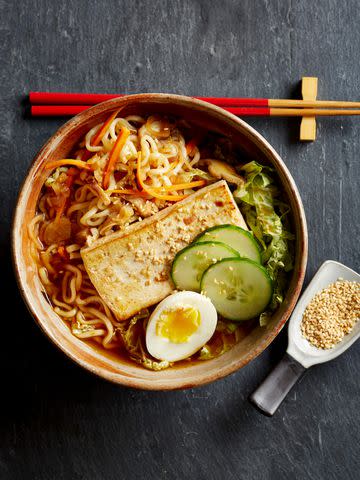
How to Soft-Boil an Egg
The method for how to soft-boil an egg is very similar to hard-boiling eggs—the main difference is time. Follow this easy method for quick soft-boiled eggs:
Bring water to a boil.
Using a slotted spoon, lower eggs into the water.
Reduce heat to maintain a gentle boil.
Cover and cook 6 minutes for soft-boiled eggs.
Test Kitchen Tip
If you like your yolk more "jammy" like a hybrid of hard and soft yolk, cook using the gentle boil for 8 minutes.
Poaching Eggs
If you're wondering about how to poach eggs, which also requires boiling water, get our directions on how to poach eggs.
Choosing and Storing Eggs
To ensure your eggs are in the best shape for making hard-boiled eggs (or whatever egg dish you're craving), here are our Test Kitchen's must-know tips.
Select clean, fresh eggs from refrigerated display cases. Avoid dirty or cracked eggs, which may be contaminated with harmful bacteria.
Refrigerate eggs in their cartons or egg storage containers so they don't absorb refrigerator odors. Be sure to store eggs with the pointed ends down, maintaining freshness by keeping the yolks centered and the air cells stable.
Fresh eggs can be refrigerated for up to 5 weeks after the packing date (a number stamped on the carton from one to 365, with one representing January 1 and 365 representing December 31).
Related: Can You Freeze Eggs?
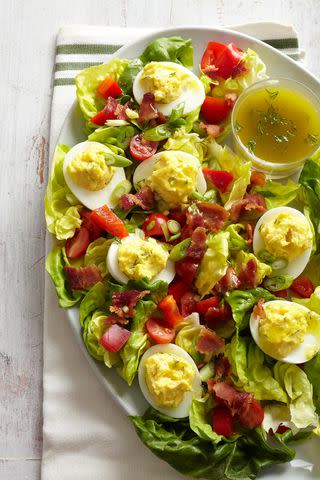
Get Our Deviled Egg Salad Recipe
How to Use Hard-Boiled Eggs
Boiled eggs can be delicious all on their own, but they're also a great way to give salads like and other recipes an extra boost of protein. Of course, there are plenty of deviled egg recipes (we've even got a deep-fried version!). For more delicious ways to use hard-cooked or poached eggs, try topping a hearty breakfast bowl! We're also big fans of adding eggs to sandwiches. Up your lunchtime game with our ham and egg sandwiches.
For more Better Homes & Gardens news, make sure to sign up for our newsletter!
Read the original article on Better Homes & Gardens.
